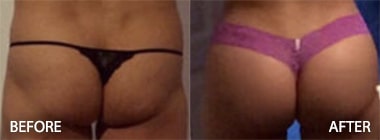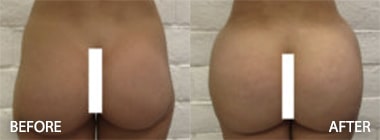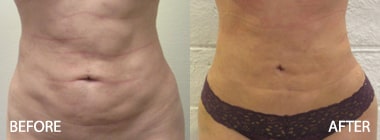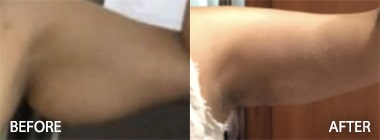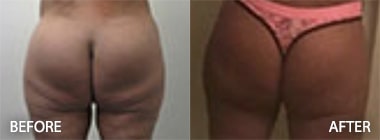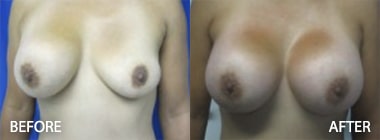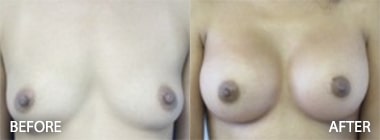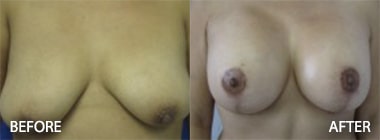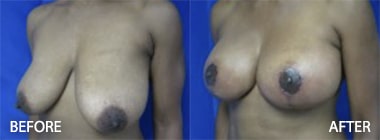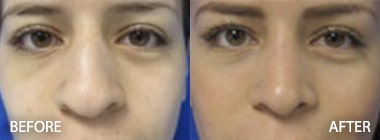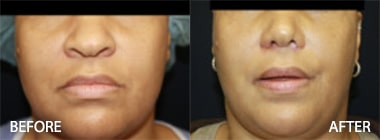Types of Liposuction Available
Conventional Liposuction (Tumescent Liposuction)
Conventional liposuction in which a suction vacuum is used to extract the fatty tissue through a small cannula is the most commonly performed aesthetic procedure in the United States. The method is reliable and safe compared to other energy based forms of liposuction. In addition, the fat harvested can be used for fat transfer procedures including Brazilian buttlift, facial fat grafting, calf fat grafting and many others.
Ultrasound-Assisted Liposuction
Introduced in the late 80s, ultrasonic liposuction uses a probe to deliver ultrasonic energy to the fatty tissues to help destroy and liquify the fat. The fat must still be suctioned out as in conventional liposuction. The advantage of this technique is that it permits easier removal of fat from fibrous areas such as the upper abdomen, back, and flanks with greater ease, especially during secondary liposuction procedures. This is not to say that conventional liposuction is ineffective at removing fibrous fat. This is not the case.
Ultrasonic Liposuction has a significant drawback and that is the probe that is liquefying fat can also cause thermal injury to the skin that can result in burns and scars.
Laser Liposuction, Smart Liposuction, Vaser Lipo, and J-plasma
Laser liposuction, smart liposuction, Vaser lipo, and J-plasma all generate heat from a monopolar device. Bodytite is a bipolar device that reduces the risk for thermal injury, but it is not a liposuction device. Thermal injury plagues SmartLipo, Vaser Lipo, and J-plasma, and the burn scars from these methods have no viable surgical treatment.
Tickle Lipo or Tickle Liposuction
Tickle liposuction or nutational infrasonic liposuction (NIL) relies upon an air stream and the motion of the cannula itself to help remove fat. Once again, tickle liposuction has the final common pathway of removing fat under pressure from vacuum suction. This type of liposuction involves no type of heat or laser like smart lipo or laser lipo or vaser lipo or ultrasonic liposuction.
Some doctors and patients report that this method of liposuction makes the patient more comfortable. However, this is done with local anesthetic to numb the areas, so it is really similar to any existing form of liposuction. Remember also that local anesthesia is appropriate for smaller areas of liposuction and may be inappropriate for larger procedures or for revision liposuction due to scarring issues.
In addition, the risks of tickle lipo are comparable to those of any other liposuction treatment. There is a risk of an uneven result and damage to surrounding tissues. Once again, it is always the skill of the liposuction surgeon and not the tickle liposuction equipment which makes for the best result. There are so many of these different liposuction modalities marketed that patients are much better off identifying the surgeon with the most skill to make the results a reality.
Body-Jet or Water-Assisted Liposuction
Body-Jet is water-assisted liposuction (WAL) used to remove excess fat just like any liposuction procedure.
It uses a fine, pressurized stream of water to break up the fat before it’s sucked out via a cannula (a thin tube).
Body-Jet or water-assisted liposuction is said to cause less trauma and have shorter recovery times than traditional lipo. However, there is no data to support those statements.
In some cases, water-assisted liposuction is used in improving lipedema—a condition that causes abnormal fat distribution, leading to painful swelling. H0wever, conventional liposuction has been used for decades to treat these same issues.
There is no energy component to tighten the skin. As such there is no risk for burns. It has the same complications as other methods of tumescent liposuction.
Once again, Dr. Hughes only performs very precise tumescent liposuction, and it is always the surgeon and not the modality that determines the result.
Airsculpt Lipo
Advocates of Airsculpt suggest that the small vibrating cannula breaks up the individual fat cells far more gently, with minimal shearing before liposuction occurs. They contend that this results in less trauma to the tissue despite the final common pathway being liposuction of the fat.
Another purported benefit of AirSculpt technology is that the fat cells remain viable for fat transfer. It’s most commonly performed in combination with other plastic surgery procedures, such as Brazilian butt lift, breast fat transfer, facial fat transfer, hand fat transfer, calf fat transfer or any other similar procedure. Tumescent liposuction can be said to do the same.
AirSculpt liposuction can performed on a variety of body areas, including the hips, abdomen, love handles, arms, and back, as well as under the chin. The procedure is typically performed under local anesthesia with oral sedation. The advocates of this technology believe that the friction from the cannula creates heat that triggers a healing response, leading to new collagen production and firmer skin in the treated area. This may be overstated as the friction from traditional liposuction would cause the same.
Advocates cite minimal downtime though the healing should take the same amount of time. The AirSculpt cannula entry point is about 2 mm in diameter and does result in a scar – so it is certainly not a scarless procedure.
As with other fat removal procedures, potential risks include bruising, swelling, infection, bleeding, irregularity, inadequate resection. Some have complained of lumps, asymmetry, and minimal change. Some patients don’t see skin tightening results, which is not surprising.
Realself says that providers now offer AirSculpt+, which includes Renuvion for skin tightening, which indicates the less than optimal skin tightening results of the original technology.
Power-Assisted Liposuction or PAL
In this method, the cannula is powered back and forth by an external source rather than by the surgeon’s arm. Systems are either electrically driven or gas-driven. This technology was developed to decrease physician fatigue and offers no other advantages over conventional liposuction.
Syringe Aspiration Liposuction
This technique is effective for sensitive and smaller volume areas, such as the neck. It is commonly used for harvesting fat for transfer, as less mechanical damage to the fat cells allows for greater fat viability in its new location, such as the face. (See Facial Fat Grafting Procedure)
Los Angeles and Beverly Hills Liposuction Articles from Dr. Kenneth Hughes
Article 1: Overview of Liposuction
Article 2 : History and Physical for the Liposuction Patient
Article 4 : Complications of Liposuction
Article 5: Complications of Liposuction 2
Article 6: Postoperative Management in Liposuction
